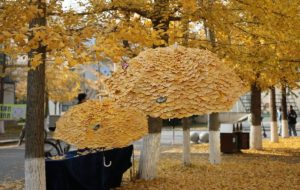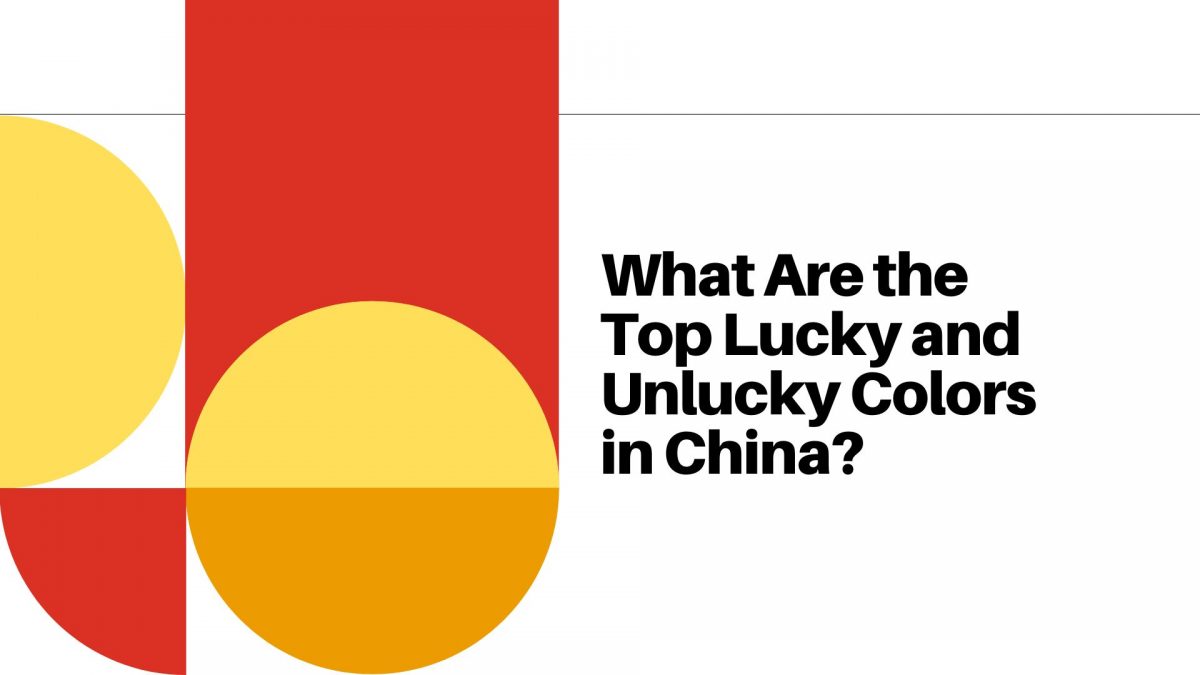
In Chinese culture, the luckiest colors are red, yellow and green. The unluckiest colors in China are white and black. There are also neutral colors that depend on context, such as grey and blue. Understanding the symbolism of color in Chinese culture is an important part of your language learning journey. Read our guide on the lucky and unlucky colors in China to explore their importance for special occasions, gift-giving and beyond!
What is the luckiest color in China?
Red is the luckiest color in China and is a symbol of celebration, success and good fortune. In Traditional Chinese Medicine (TCM), red represents fire and is associated with strength and power. In Chinese culture, red is the color that evokes the most emotion and it is traditionally associated with celebrations and ceremonies such as Chinese New Year and weddings. Red is also the color traditionally worn by Chinese brides, as the color is thought to ward off evil and is a symbol of fertility. In ancient times, only the emperor and their close relatives could have homes with red and yellow roof tiles. Chinese red is also inclusive of shades of pink, orange and dark brown that would be distinguished in other cultures.
8 places where the lucky color red is found in China
- Festivals such as Chinese New Year
- Weddings (including traditional bridal dress)
- Historical buildings and landmarks
- Red lanterns to ward off evil spirits (e.g. at temples and religious sites)
- Red envelopes for gift-giving
- Traditional robes of high officials
- Art and Culture
- National symbols: the flag of China is red and yellow!
Did you know? The walls of the Forbidden City in Beijing are mostly painted red. This is seen as a symbol of good fortune and to helps to ward off evil spirits!
What are the other lucky colors in Chinese culture?
Yellow
Yellow is associated with heroism, power and authority in Chinese culture. Golden yellow is considered the most beautiful color in Chinese culture. The word for yellow in Chinese 黄 (huáng) sounds like the word for emperor 皇 (huáng) and it was exclusively used by the imperial household in ancient times. Yellow is the color of late summer in Chinese culture and it symbolizes compassion and warmth. The Yellow River is also known as the Cradle of Civilization in China, as many historical settlements were built along its banks. In Buddhism, yellow is the main color and represents being free from life’s worries and troubles.
Green
Green is a lucky color in China that represents health, wealth and fertility. It is also a symbol of purity and cleanliness. Green is the color of spring in Chinese culture and it is associated with rebirth and rejuvenation. In ancient times, azure roof tiles were used to adorn the Temple of Heaven to represent proximity to heaven. Interestingly, in ancient Chinese language no distinction was made between the colors green and blue. Instead, a single color qīng (青) was used for both. In modern times, green is often used for painting buildings and packaging materials. Look out for green milk cartons next time you are shopping in China, as the color is often used to represent purity of the product and freedom from contamination.
Note: green hats should be avoided when giving gifts to men in China, as it is thought to represent that he has a cheating romantic partner!
Gold
Another lucky color in China is gold, which symbolizes affluence, longevity and nobility. Gold is a symbol of wealth and status in Chinese culture. Gold and red are often seen in combination for ceremonies and celebrations such as Chinese New Year. Around the world, gold is often seen as the most valuable gift you can give and it is often gifted in China. However, there is a saying in Chinese that ‘gold has a price, jade is priceless’ (金有价,玉無價 / jīn yǒu jià, yù wú jià).
Purple
Purple is a lucky color in China that represents love and romance in modern times. In traditional Chinese culture, purple symbolized honor, power and spiritualism. Purple was also worn by ancient officials in China. There is a Taoist saying in China 紫气东来 (zǐ qì dōng lái), which means ‘purple air comes from the east’. This is used to convey that good times are coming and is a representation of the purple light that can be seen briefly during the break of dawn.
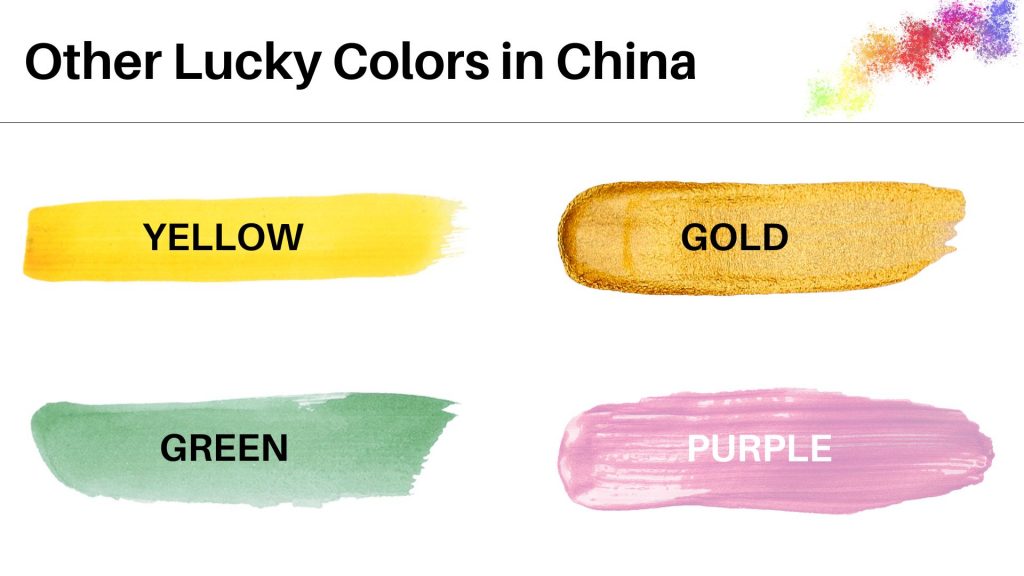
What are the unlucky colors in Chinese culture?
White
The unluckiest color in China is white and it is traditionally reserved for funerals and mourning. White is the opposite of red, the luckiest color in Chinese culture, symbolizing grief and sadness. In Western cultures, brides traditionally wear white dresses to represent purity, whereas in China red wedding dresses are traditional. In modern day China, Chinese brides often have both a traditional red dress and a western white dress for different stages of the wedding ceremony. There are also certain situations, such as in TCM, where white is used to represent purity and wholeness.
Black
Black is an unlucky color in China that has historical connotations with evil, darkness and the unknown. Although black has less association with mourning as white in Chinese culture, it is still used to represent darkness and sadness. In ancient China, black was considered as the color of bruises and thus a sign of pain and negative energy. In TCM, black is the color of Yin in Yin-Yang symbolism, representing feminine energy, passivity and a cooling nature. Black is avoided at traditional celebrations in Chinese culture, due to its somber nature.
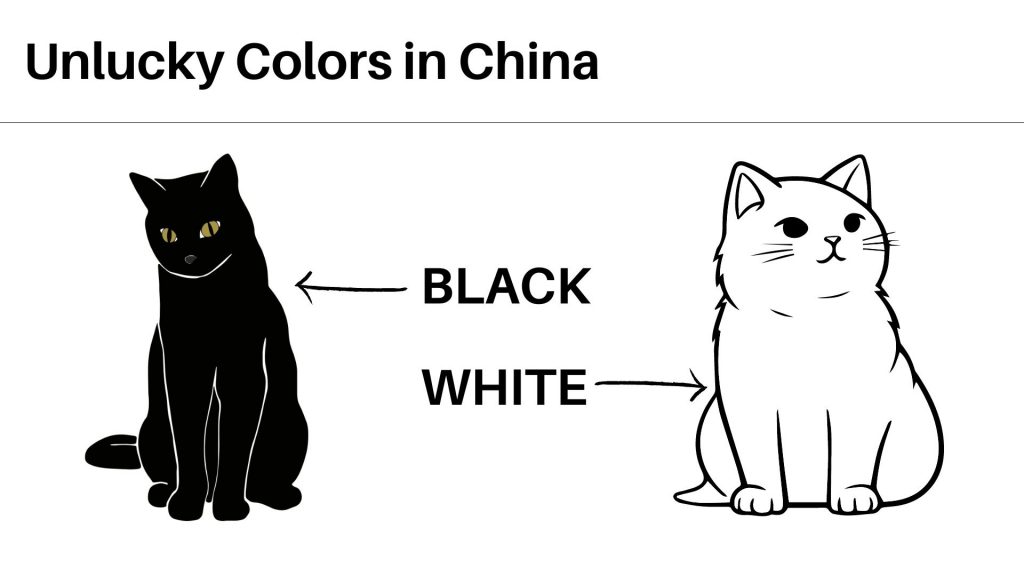
Neutral colors in Chinese Culture
Blue
Blue is a neutral color in Chinese culture and can have positive or negative connotations depending on context. In TCM, blue represents spring and brings new growth and positivity. In some parts of China, a dark shade of blue is used for funerals and represents mourning. It can also be used to symbolize sadness, coldness and indifference.
Did you know? In TCM, water is represented by black, rather than blue!
Grey
Grey is considered a neutral color in China and its perception varies depending on context and cultural associations. Traditionally, grey is seen as a symbol of balance, stability and neutrality in Chinese culture. In somber occasions, such as funerals and memorial events, grey is sometimes used to represent mourning and loneliness.
Why not read our blog on the lucky and unlucky numbers in China?
What are the lucky and unlucky colors for Chinese zodiac animals?
There are 12 Chinese Zodiac Signs, each represented by an animal that are said to have descended from heaven. Each animal represents certain characteristics and there are lucky and unlucky colors in Chinese culture associated to them all.
| Chinese Zodiac Animal | Year of Birth | Lucky Colors | Unlucky Colors |
| Rat | 1924, 1936, 1948, 1960, 1972, 1984, 1996, 2008, 2020 | blue, gold, green | yellow, brown |
| Ox | 1925, 1937, 1949, 1961, 1973, 1985, 1997, 2009, 2021 | white, yellow, gold | blue |
| Tiger | 1926, 1938, 1950, 1962, 1974, 1986, 1998, 2010, 2022 | blue, grey, orange | brown |
| Rabbit | 1927, 1939, 1951, 1963, 1975, 1987, 1999, 2011, 2023 | pink, purple, red | yellow, white |
| Dragon | 1928, 1940, 1952, 1964, 1976, 1988, 2000, 2012, 2024 | gold, grey, white | blue, green |
| Snake | 1929, 1941, 1953, 1965, 1977, 1989, 2001, 2013, 2025 | black, red, yellow | brown |
| Horse | 1930, 1942, 1954, 1966, 1978, 1990, 2002, 2014, 2026 | green, yellow, purple | blue, white |
| Goat | 1931, 1943, 1955, 1967, 1979, 1991, 2003, 2015, 2027 | brown, yellow, red | blue, black |
| Monkey | 1932, 1944, 1956, 1968, 1980, 1992, 2004, 2016, 2028 | blue, grey, black | red, pink |
| Rooster | 1933, 1945, 1957, 1969, 1981, 1993, 2005, 2017, 2029 | brown, green, gold | red, pink |
| Dog | 1934, 1946, 1958, 1970, 1982, 1994, 2006, 2018, 2030 | red, green, purple | white, gold |
| Pig | 1935, 1947, 1959, 1971, 1983, 1995, 2007, 2019, 2031 | grey, orange, brown | red, green |
Did you know? Goats are also known as sheep or rams in the Chinese Zodiac!
What are the lucky and unlucky colors for Chinese New Year celebrations?
Colors play an important role in Chinese New Year celebrations. The most popular lucky colors for Spring Festival celebrations are red (good fortune), yellow (harmony), green (growth). Unlucky colors for Chinese New Year are white and black, so should be avoided. Each color holds particular significance and symbolism, representing positive or negative associations.
Lucky colors for Chinese New Year
- Red. Red symbolizes good fortune, positivity and vitality and is the luckiest color for Chinese New Year celebrations. Red is associated with positive, life-generating energy through fire, blood and the sun. Red is also a powerful color that wards off evil spirits and brings optimizm for the year ahead! Look out for red decorations and gifts of money given in red envelopes (紅包 / hóngbāo) during Chinese New Year.
- Yellow. Yellow is thought to create harmony, warmth and strength, making it a popular color for Chinese New Year. People often wear yellow or display yellow decorations to bring good fortune and longevity.
- Green. Green symbolizes regeneration, fertility and health during Chinese New Year. Also associated with purity and cleanliness, green is often represented in festive meals with vegetable dishes.
- Gold. Gold represents good fortune, wealth and prosperity in Chinese culture and is often displayed during Chinese New Year celebrations. Yellow and gold both bring positive energy, however yellow is often used in place of gold when in combination with red.
Unlucky colors for Chinese New Year
- White. White is associated with mourning in China and should be avoided during Chinese New Year. Wearing white during Spring Festival can be seen as inviting misfortune and death for the year ahead.
- Black. As with white, black has negative connotations associated with death and sadness in Chinese culture. Wearing or displaying black during Chinese New Year celebrations can be seen as inauspicious and should be avoided.
The importance of colors in Traditional Chinese Medicine (TCM)
According to TCM Five Element Theory, color is a key factor in supporting the function of our internal organs. Colors in TCM have different characteristics to lucky and unlucky colors in wider Chinese culture. Colors in TCM are associated to physical and emotional characteristics that allow us to work in harmony with the world around us.
The five colors in TCM Five Element Theory
- Green. Element – wood. Organ – liver. Green shines through in springtime and represents new growth and regeneration. It is also the known as the ‘Master Color’ and is beneficial in the treatment of all conditions.
- Red. Element – fire. Organ – heart. Red is the color of summertime, wealth and prosperity. Red has healing and regenerating properties in TCM and is the color that evokes the most emotion.
- Yellow. Element – earth. Organ – spleen. Yellow belongs to earth and represents a stabilizing energy and a balance of Yin-Yang. The earth is a grounding element in TCM.
- White. Element – metal. Organ – lungs. White is a combination of all colors and is associated with metal which represents immunity and longevity.
- Black. Element – water. Organ – kidneys. Black is the lack of any light and color and represents new beginnings in TCM, or the start of new life.
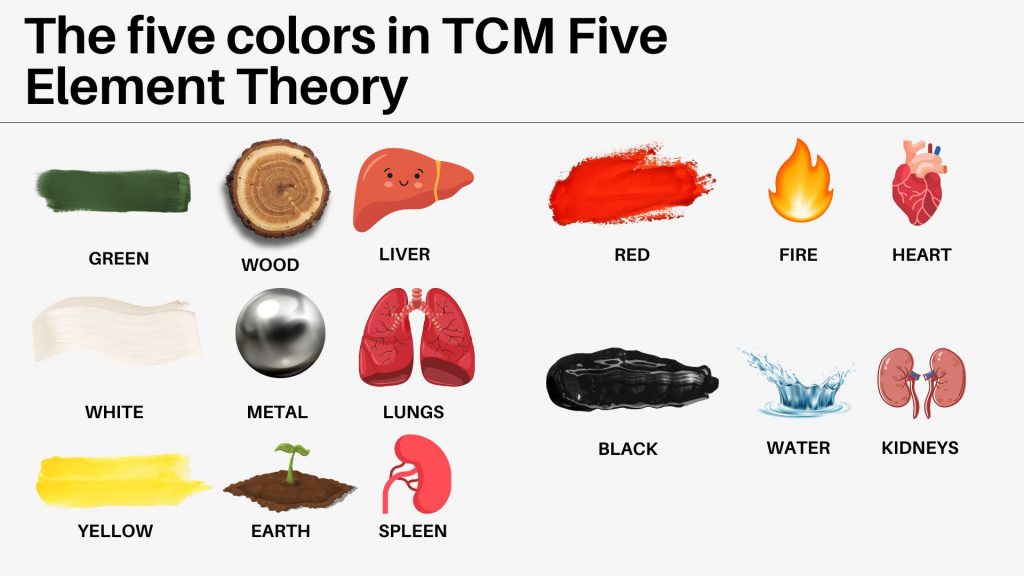
Conclusion
Understanding the role of lucky colors in China is vital for understanding cultural symbolism and traditions. Colors convey different meanings depending on setting and context, so a grasp of their meanings can be used to show cultural appreciation and sensitivity.
Studying Chinese? Discover our top Chinese movies to learn Chinese!
Author:
Sean studied Chinese and Spanish at University of Leeds and founded The Chairman’s Bao alongside Tom Reid in his final year of study in 2015. Current Managing Director of The Chairman’s Bao, he has overseen the company’s growth from university bedroom concept to an international force in the EdTech industry with over 200,000 individual users and over 400 global partner institutions. Sean also launched Newsdle alongside Tom Reid and Oliver Leach in 2021, for students and teachers of Spanish and French. In his spare time, Sean is still a keen language learner and runner. He also sits on the Board of charity Leeds Irish Health and Homes in the UK.
FAQ
- What is the luckiest color in China? Red is the luckiest color in China.
- What is the unluckiest color in China? White is the unluckiest color in China.
- What are the neutral colors in Chinese culture? Blue and grey are neutral colors in Chinese culture and can represent both positive and negative emotions depending on context.
- What are the lucky colors associated with Chinese New Year celebrations? Red, yellow, green and gold are the luckiest colors during Chinese New Year.
- What are the colors in Traditional Chinese Medicine (TCM)? The five colors in TCM (green, red, yellow, white and black) each have a corresponding element and internal organ. Stability between the elements and organs is fundamental to health.















